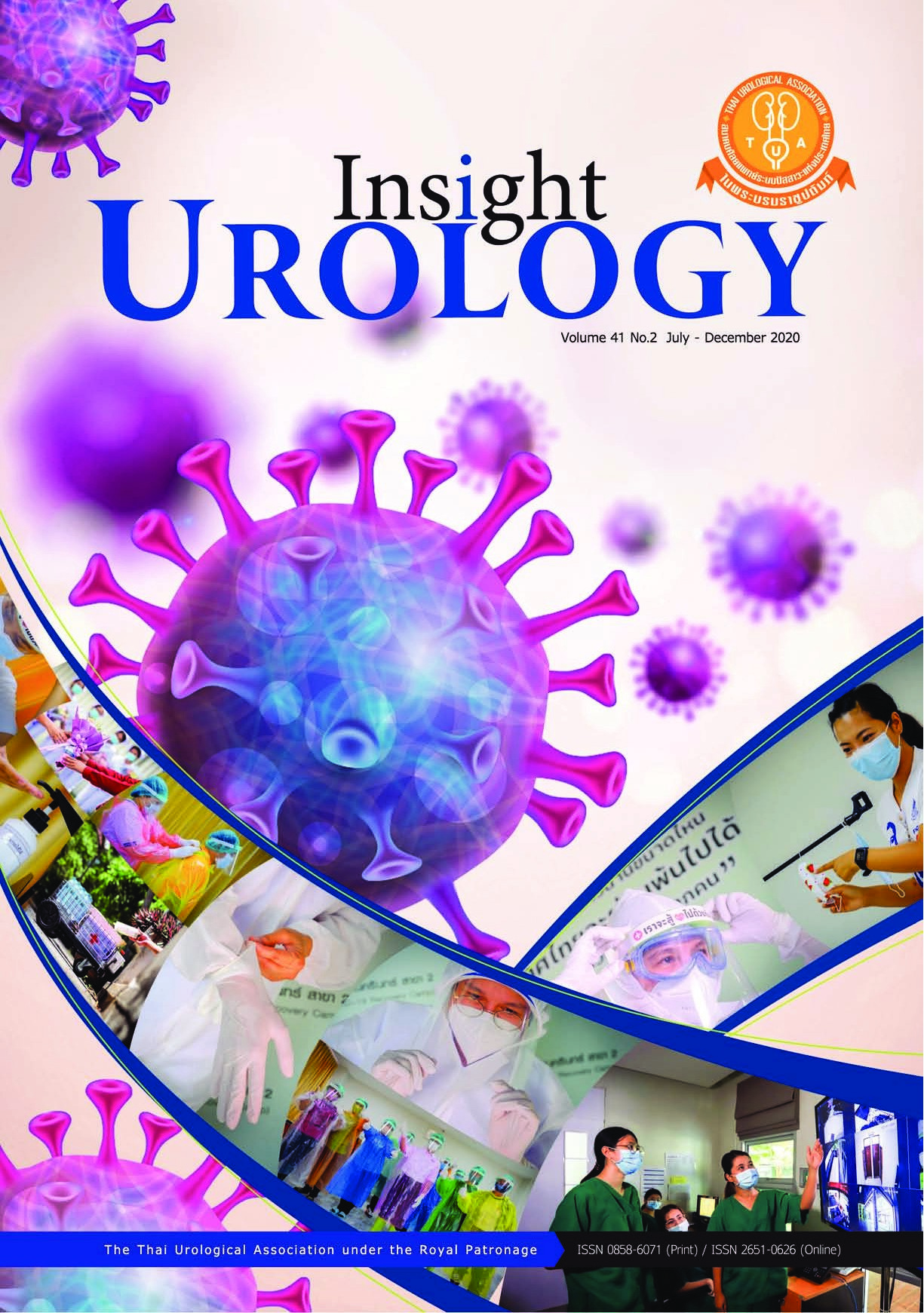Study of urinary stone composition in a university-based hospital
Keywords:
Stone analysis, infrared spectroscopy, stone compositionAbstract
Objective: Knowing the composition of a urinary stone is valuable in its treatment, helping to define stone etiology, guide management, and prevent stone recurrence. This study aims to identify the incidence of various stone compositions in a university-based, tertiary care hospital.
Material and Method: This retrospective study was conducted at King Chulalongkorn Memorial Hospital. Data of stone composition by infrared spectroscopy were collected from all patients undergoing upper urinary tract stone removal surgery from January 2015 to December 2018. Demographic data including age, gender, comorbidities, and stone characteristics were also collected.
Results: A total of 173 stone analyses were included in this study. The main stone composition was calcium oxalate monohydrate (whewellite 49.7%), calcium
carbonate apatite (dahllite 34.1%), calcium oxalate dihydrate (weddellite 5.2%), magnesium ammonium phosphate (struvite 4%), and ammonium hydrogen
urate (2.9%). A small proportion of uric acid (1.7%), cystine (1.7%), and calcium phosphate (brushite 0.6%) was also found. No correlation was found between stone composition and age, gender or occupation. Multivariate analysis revealed that calcium oxalate stones were more common in males than females (odds ratio=2.21, 95%CI: 1.91-4.12; p-value=0.01). Phosphate-containing stones (struvite, dahllite and brushite) were more common in patients with a history of urinary tract infection (odds ratio=3.06, 95%CI: 1.18-7.92; p-value=0.02).
Conclusion: Calcium oxalate and calcium carbonate apatite were the most common stone compositions found in this study. Male gender was a risk factor
for oxalate stone, and a history of urinary tract infection was a risk factor for phosphate-containing stones.
References
Curhan GC. Epidemiology of Stone Disease. Urol Clin North Am 2007;34:287-93.
Marshall V, White RH, De Saintonge MC, Tresidder GC, Blandy JP. The natural history of renal and ureteric calculi. Br J Urol 1975;47:117-24.
Johnson CM, Wilson DM, O'Fallon WM, Malek RS, Kurland LT. Renal stone epidemiology: a 25-year study in Rochester, Minnesota. Kidney Int 1979;16:624-31.
Soucie JM, Thun MJ, Coates RJ, McClellan W, Austin H. Demographic and geographic variability of kidney stones in the United States. Kidney Int 1994;46:893-9.
Taylor EN, Stampfer MJ, Curhan GC. Obesity, weight gain, and the risk of kidney stones. JAMA 2005;293:455-62.
Coe FL, Evan A, Worcester E. Kidney stone disease. J Clin Invest 2005;115:2598-608.
Becker G. Uric acid stones. Nephrology 2007; 12:S21-S5.
Hesse A, Kruse R, Geilenkeuser WJ, Schmidt M. Quality control in urinary stone analysis: results of 44 ring trials (1980-2001). Clin Chem Lab Med 2005;43:298-303.
Tanthanuch M, Apiwatgaroon A, Pripatnanont C, Urinary Tract Calculi in Southern Thailand. J Med Assoc Thai 2005;88:80-5.
Holmgren K, Danielson BG, Fellstrom B, Ljunghall S, Niklasson F, Wikstrom B. The relation between urinary tract infections and stone composition in renal tone formers. Scand J Urol Nephrol 1989;23:131-6.
Miano R, Germani S, Vespasiani G. Stones and urinary tract infections. Urol Int 2007;79 Suppl 1:32-6.
Buchholz NP, Kim DS, Grover PK, Ryall RL. Calcium oxalate crystallization in urine of healthy men and women: a comparative study. Scanning Microsc 996;10:435-42; discussion 42-4.



